Article Archive
Acqua di Parma
Colonia | Colonia Assoluta
14 July, 2015
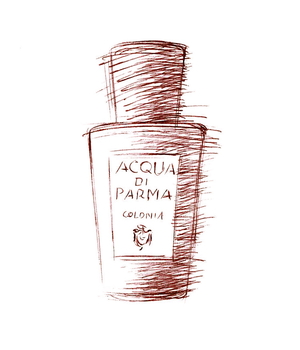 Before I start, I have to admit that the Acqua di Parma colognes have never really floated my boat, but very kindly the company have sent me some samples to try, and as it’s one of the most popular men’s fragrances I wanted to explore why that might be.
Before I start, I have to admit that the Acqua di Parma colognes have never really floated my boat, but very kindly the company have sent me some samples to try, and as it’s one of the most popular men’s fragrances I wanted to explore why that might be.
There are lots of things to like about Acqua di Parma Colonia. Its packaging, for starters, is wonderfully elegant: a golden-yellow, linen-textured cardboard tube, which splits exactly in half to reveal the bottle tightly nestled inside.
The bottle itself is a beautifully judged design, in plain glass with gently flared shoulders and a chunky black cap to match. And the typography is lovely: effortlessly stylish, with something of the 1920s about it. The whole package is an object lesson in how to make a product that says ‘classic’ and ‘quality’.
So what about the scent inside? Again, it’s classic and simple – perhaps a little too simple for me. The original Colonia was launched in 1916, and I’m presuming it was always a fresh, citrussy eau-de-cologne, though like pretty much every long-lived fragrance on the market it will almost certainly have been reformulated over the years.
That’s not always a bad thing, and today’s version may well smell more sophisticated than the original; Agua de Colonia by the Spanish brand Alvarez Gomez, for example, may conceivably have been less tinkered with, but by comparison it smells quite crude and harsh.
Not that Colonia has a particularly complex character: it’s intensely lemony when first you spray it on, but as the sharpness of the lemon fades into the background you get the clean, herbal smells of rosemary and lavender. So far so classic eau-de-cologne, but what makes Colonia different is the fact that it’s also blended with rose, which adds an unobtrusively feminine touch – a bit like the artificial jasmine scent at the centre of Eau Sauvage, though not nearly as striking in its effect.
The rose (I think) also makes Colonia smell rather talcum-powderish, which is pleasant enough but comes across as somehow rather old-ladyish – I guess because we associate powdery perfumes with an older generation. It certainly smells clean and fresh, in a soapy kind of way, and perhaps that explains its popularity among men for whom smelling clean and fresh is the main (and often only) purpose of perfume.
Personally I want to smell a bit more interesting than fresh laundry, and my other problem with Colonia is that it doesn’t last: within an hour or two I can hardly smell it on my skin. Again, that may be part of its appeal for men who are a bit nervous about wearing scent of any kind, so horses for courses, I suppose.
After its glory days in the 1920s, the Acqua di Parma company limped along until 1993, when it was bought by three rich Italian businessmen whose money came from Ferrari cars, Tod’s shoes and La Perla underwear. They launched scented candles and the like, but it wasn’t until after the luxury conglomerate LVMH took a stake in 2001 that the Colonia range was extended.
First came Colonia Assoluta in 2003, followed by Intensa in 2007, Essenza in 2010 and Intensa Oud in 2012. I have all of these versions apart from Intensa Oud, and I have to admit that, though I thought I had a fairly sensitive sense of smell, the differences between them are so subtle that I find them almost impossible to tell apart.
Colonia Assoluta was formulated by two of the best-known perfumers around today: Jean-Claude Ellena (creator of Vétiver Tonka, among others) and Bertrand Duchaufour (creator of many unusual fragrances, especially for L’Artisan Parfumeur), which is a bit like getting Debussy and Ravel to compose a duet. The results should be extraordinary, but these two great talents seem to have cancelled each other out: Colonia Assoluta is discreet to the point of invisibility, like a plain grey Hermès jumper.
What Duchaufour and Ellena seem to have done is shuffled a few of the ingredients of the original Colonia about a bit – changing the lavender for jasmine, for example – but it’s all so carefully balanced that the overall effect is almost identical, though you can smell a faint difference after an hour or two. Their work is certainly very subtle and clever, like Gus Van Sant’s frame-by-frame remake of Psycho, but you could argue that it’s equally pointless.
The same conjuring trick, if it’s fair to call it a trick, seems to have been achieved with the Essenza and Intensa versions: in each of them the ingredients are slightly different, but their smell is even less varied than their packaging (Essenza comes in a black tube, but is otherwise, ahem, a carbon copy).
Brilliant or bonkers? Delicious discreet or disappointingly dull? I’ll have to let you compare them for yourself. Maybe my nose isn’t as super-sensitive as it should be, but I’d be interested to hear what other people think. All the same, thank you to Acqua di Parma for letting me give them a try: they certainly look very handsome on my perfume shelf.
Hermès
Cuir d’Ange
27 April, 2015
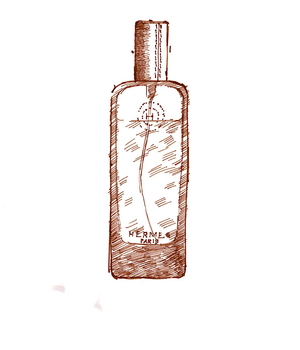 The latest addition to the Hermessences range, created by in-house perfumer Jean-Louis Ellena for Hermès and launched in 2014, Cuir d’Ange is, as its name suggests, a rather ethereal take on the smell of new leather – appropriately enough for a company that started out making riding tackle.
The latest addition to the Hermessences range, created by in-house perfumer Jean-Louis Ellena for Hermès and launched in 2014, Cuir d’Ange is, as its name suggests, a rather ethereal take on the smell of new leather – appropriately enough for a company that started out making riding tackle.
Inspired by a phrase in Jean le Bleu, a 1932 novel by Jean Giono – a kind of French Thomas Hardy – Ellena explains that, for Cuir d’Ange, ‘Using the smells that are my words, I wanted to write a poem to rekindle the love duet between leather and the skin. Its softness and lightness, its tension and its caress. Heliotropes and hawthorn, leather and musk.’
This particular leather smells slightly sweet and rather papery, a bit like skin, which I guess makes sense. I’d like it more if didn’t also include the faintly sweaty smell of hay, which reminds me of another Hermès fragrance, Narcisse Bleu (the hay smell coming from narcissus flowers), but like the other perfumes in the range it’s subtle and sophisticated if, arguably, a little too polite: smart without being particularly sexy. Which, when you come to think of it, makes it a perfect complement to an Hermès suit and tie. But oh for a touch of vulgarity!
Acqua di Parma
Colonia Leather
26 February, 2015
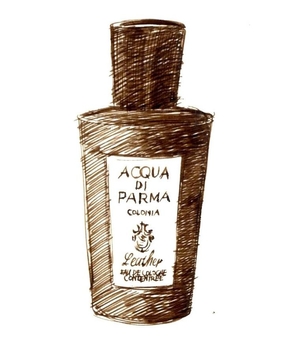 The smell of leather is one of the staples of men’s fragrances. It has an interesting history, too, since at least one of the roots of modern perfumery can be followed back to the perfumed-leather gloves that became fashionable from the sixteenth century on.
The smell of leather is one of the staples of men’s fragrances. It has an interesting history, too, since at least one of the roots of modern perfumery can be followed back to the perfumed-leather gloves that became fashionable from the sixteenth century on.
Some ‘leather’ fragrances are more successful than others, Chanel’s powerful and historic Cuir de Russie being one of the best. But until the launch of Colonia Leather in May 2014 I’d never come across a perfume that really captured clean new leather’s comfortingly aromatic smell.
I have to admit that this came as something of a surprise, as I’m not a great fan of the other perfumes in the Acqua di Parma range. I can recognise their quality, and I love their packaging, but their combination of lemon and rose just doesn’t do it for me – the rose seems just too feminine a counterpart to the freshness of the classic citrusy eau-de-cologne.
So I could hardly believe my nose when I first sprayed Colonia Leather on. Yes, it contains a definite hint of the Acqua di Colonia signature rose-cologne smell, but that’s quickly overlaid by a beautifully smooth, refined leather smell, like the finest fresh kidskin gloves, or an unjustifiably expensive suede jacket from Hermès. Though it’s not especially strong, its gentle scent stays on the skin for a good half day or more, even if I find it hard to smell on myself after an hour or so.
How such an authentically leathery fragrance is done is beyond me, though it does contain at least one of the classic ingredients of ‘leather’ perfumes, rectified birch tar, which is also used in Cuir de Russie. I’ve pointed out before that a list of ingredients is about as useful in describing a perfume as a list of words in describing a Shakespeare sonnet, but for those who would like to know here are some of the other things in the formula: Sicilian lemon, Brazilian orange oil, raspberry, rose, honeysuckle, Paraguayan petitgrain (made from the twigs of orange trees), ‘red’ thyme, cedarwood, cistus, guaic wood and olibanum.
So who was behind this marvellous scent? As usual there’s no mention anywhere on the Acqua di Parma website or in its marketing material, but I think Colonia Leather’s creator deserves more credit than that. So please take a bow François Demachy, the French perfumer, formerly at Chanel, who has been the ‘director of olfactory development’ at Christian Dior since 2006.
(If you’re wondering, incidentally, what Dior’s head perfumer is doing moonlighting for Acqua di Parma, the answer is that both companies are owned by the luxury-goods conglomerate LVMH, and Demachy also has oversight of its other perfume brands. And as it happens Colonia Leather isn’t his first perfume for Acqua di Parma; he also created Colonia Intensa, which was launched back in 2007.)
At £150 for 100ml Colonia Leather is a lot more expensive than the other fragrances in the Acqua di Parma range, and for now (2014) it’s only available from Harrods, but it’s really worth going to smell, even if you can’t justify spending quite so much on a single bottle of perfume.
Frederic Malle
Cologne Bigarade
10 January, 2015
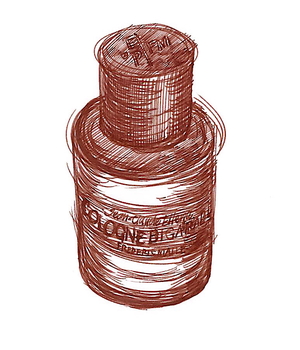 Every morning for my breakfast I have tea, toast and home-made marmalade. It’s one of my favourite things, and I love the bittersweet smell of Seville oranges, which only appear in the shops for a couple of weeks around this time of the year.
Every morning for my breakfast I have tea, toast and home-made marmalade. It’s one of my favourite things, and I love the bittersweet smell of Seville oranges, which only appear in the shops for a couple of weeks around this time of the year.
In fact as I sit here writing this post in January, Roy is busy cooking marmalade next door, and the powerful odour of bitter orange (known as bigarade in French) is suffusing the house from kitchen to attic.
So it could hardly be a better time to review Cologne Bigarade, created by the perfumer Jean-Claude Ellena for the French fragrance curator and marketeer, Frédéric Malle (nephew of the film director Louis Malle). Launched in 2001, it was one of the first of the Editions de Parfums Frédéric Malle, and to my mind it’s one of the most immediately appealing and easy to enjoy.
On first – I was going to say ‘glance’, but I suppose I should say ‘spritz’, it smells like a simple but high-quality natural scent, with the exact mix of sweet green freshness and slight bitterness that you get from orange peel and its bitter pith.
You could, I guess, just bottle Seville-orange extract and have done with it – and apparently Jean-Claude Ellena did commission a special new essence for this scent, obtained by molecular extraction. But like all good perfumes Bigarade Cologne is ultimately a clever recreation of what seems, on the surface, like a simple natural scent, using a careful balance of other ingredients to enhance and support the main ingredient.
In this case, Ellena has added a bit of hay and grass – or rather their synthesised essences – which makes the orange even fresher somehow, then subtly underpinned it with a little cedar-wood and rose, adding extra depth and staying-power. You could even say that these extra ingredients suggest the smell of the leaves and the twigs of orange trees, though perhaps that’s going too far.
(Actually, unless you concentrate very hard you can’t really smell them at all; but then we’re so suggestible when it comes to scents that once someone has told you that a particular ingredient is present, you’re more than likely to ‘smell’ it whether it’s actually there or not.)
To me Cologne Bigarade also has a very slight and not unpleasant sweatiness, which (from a short trip to the kitchen and back) is part of the authentic Seville orange smell. In perfume that faint sweatiness is often derived from cumin, and I wonder if there might be a touch of that classic curry spice here too.
Cologne Bigarade is not, perhaps, the most complex perfume on the market, but like most of Jean-Claude Ellena’s fragrances it’s rather more thoughtful and unusual than the general run. Given that he’s also the in-house perfumer for Hermès, it immediately made me think of Hermès’ classic Eau d’Orange Verte, which is also based on the scent of bitter oranges. Though that perfume was originally created by Françoise Caron in 1979, Ellena developed a new version in 2004 called Concentrée d’Orange Verte.
Eau d’Orange Verte is one of my all-time favourite fragrances, yet comparing them side by side, it smells sharper and fresher, but perhaps also slightly less interesting than Cologne Bigarade, which also seems to have much more staying power (a rare quality in a citrus-based cologne, though you can also find it in the fantastic sherbet-lemon Monsieur Balmain).
All the fragrances in the Editions de Parfums Frédéric Malle are expensive, and Cologne Bigarade is no exception, even if its packaging is extremely smart. The heavy, plain-glass bottle has a chunky black cap and comes in a slide-out, black foam-padded box, which in turn slides out (with some effort) of a scarlet card wrapper. If you have money to burn then there’s an even more expensive version called Bigarade Concentrée, which I’ve smelled as a sample and lasts even longer than Cologne Bigarade. The concentrated version also seems to have less of that faint sweatiness about it, which I suspect many people would prefer; I think I do too.
Either way, a fresh but unusual cologne is a wonderful thing to have, so full marks to Jean-Claude Ellena and Frédéric Malle for giving men something a bit different to wear. In a similar vein, though with a very different smell, is Malle’s Geranium Pour Monsieur, which I hope to be able to review before long; watch this space.
Chanel
Cuir de Russie
23 November, 2014
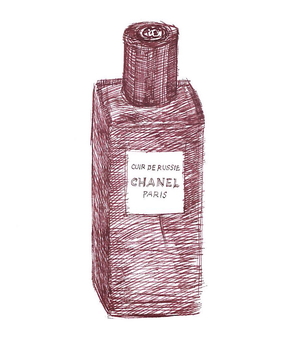 Would you smear yourself with diluted tar? That’s my first question. My second question: would you pay £150 or more to smear yourself with diluted tar? If your answer to either (or both) of these questions is ‘Not on your nelly’, then it’s possible that Cuir de Russie is not for you. If, on the other hand, you have an adventurous spirit and an interest in history, read on.
Would you smear yourself with diluted tar? That’s my first question. My second question: would you pay £150 or more to smear yourself with diluted tar? If your answer to either (or both) of these questions is ‘Not on your nelly’, then it’s possible that Cuir de Russie is not for you. If, on the other hand, you have an adventurous spirit and an interest in history, read on.
Chanel’s Cuir de Russie is widely regarded as one of the most luxurious perfumes you can buy, and there are good reasons for that. It’s one of the perfumes in Chanel’s Les Exclusifs range, all of which use the highest-quality raw materials. And it was concocted – at least in its original form – by Ernest Beaux, the perfumer whose name should really be on every bottle of Chanel No5, since it was Beaux, not Coco Chanel, who created it.
But back to tar. Tar comes in many forms, the best-known being bitumen or asphalt, the stuff that binds road surfaces together and sticks to your shoes in hot weather. You wouldn’t want to dab yourself with bitumen, not least because it smells revolting, but other kinds of tar are a different matter.
Burn wood in the absence of air and you get charcoal, but do the same to the papery sheets of bark that peel off silver birch trees, and out oozes a sticky black gloop with a rich smoky smell. This dense chemical mix of hydrocarbons and phenols is known as rectified birch tar, and it’s packed with delicious molecules such as guaiacol, cresole, catechol, pyrogallol and 5-methyl-pyrogallol dimethyl ether.
In Russia, which has no shortage of birch forests, birch tar became an important export product from the sixteenth century on. It had many uses, not least as an all-purpose glue, but the reason I’m writing about it now is because of the discovery that, if freshly tanned cowhide was impregnated with birch-tar oil, the resulting leather was not only waterproof and mould-resistant, but also developed an extremely pleasant smell.
Russian leather – or cuir de Russie, as it was known in France – gained an unrivalled reputation for quality, especially at the luxury end of the market. Ernest Beaux, who was born in Moscow and followed his brother into a job at the imperial perfumers, Rallet & Co, would have discovered the alluring smell of tar-impregnated leather early on, and it must have carried nostalgic memories for him when he left Russia for Paris in the wake of the Revolution.
The relentlessly social-climbing Gabrielle Chanel, for her part, had a Russian connection of her own: Grand Duke Dmitri Pavlovich, one of Rasputin’s assassins, with whom she had a short affair in 1920-21. It was through Pavlovich that Beaux first met Chanel, but which one of them came up with the idea of a perfume called Cuir de Russie isn’t clear. It was launched in 1924, three years after No.5, and was worn, from the first, by both women and men.
Though the use of rectified birch tar in perfumery is now restricted in the EU, and Cuir de Russie was ‘reorchestrated’ (for which read ‘reformulated’) by Chanel’s in-house perfumer Jacques Polge in 1983, it is still, it’s said, a fair approximation of Ernest Beaux’s original scent, though perhaps a little less rough-edged than the original.
Whatever the truth – and truth is a vanishingly rare commodity in the perfume industry – it’s still a wonderful smell, smoky and leathery and smooth, with no single ingredient taking centre stage. Beaux added aldehydes (the chemicals that give No.5 its glittery zing) but Cuir de Russie also includes jasmine, iris, sandalwood and rose, among other luxurious things, and it’s this balance of ‘masculine’ and ‘feminine’ scents that make it both immensely alluring and oddly difficult to place.
If ever a perfume was androgynous, then Cuir de Russie is it. Though I’m a great fan of ambiguity, and I certainly appreciate its sheer, unadulterated luxury, I have to admit that its mix of masculinity and femininity, powdery sweetness and smoky bitterness, does sometimes make it rather hard to wear. Still, it’s wonderfully long-lasting, without being overpowering, and for an expensive scent that’s surely a good thing (though as it comes in a stonking 200ml bottle, Cuir de Russie is actually better value than a lot of supposedly ‘cheaper’ perfumes). As for whether I’d wear diluted tar, I think the answer is yes.
Guerlain
Cologne du Parfumeur
6 August, 2014
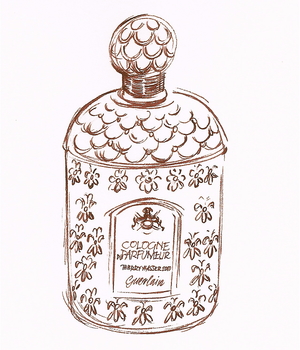 If there’s one scent that appeals to pretty much everyone then surely it’s eau-de-cologne, the zesty, refreshing blend of lemon and herbs whose (probably medicinal) origins are lost in the mists of time. Its oldest surviving surviving incarnation is the German No. 4711 Echt Kölnisch Wasser from – where else – Cologne, which you can buy for not very much from pretty much anywhere, but there are hundreds of other versions, from the cheap and nasty all the way up to Chanel’s divine (and divinely expensive) Eau de Cologne.
If there’s one scent that appeals to pretty much everyone then surely it’s eau-de-cologne, the zesty, refreshing blend of lemon and herbs whose (probably medicinal) origins are lost in the mists of time. Its oldest surviving surviving incarnation is the German No. 4711 Echt Kölnisch Wasser from – where else – Cologne, which you can buy for not very much from pretty much anywhere, but there are hundreds of other versions, from the cheap and nasty all the way up to Chanel’s divine (and divinely expensive) Eau de Cologne.
The basic ingredients of eau-de-cologne are extracts of citrus fruits, which give it its instant freshness, blended with a variety of herbs, usually including lavender and rosemary, which add extra staying-power and warmth. It’s more of a style than a formula, and every different eau-de-cologne has a slightly different combination of ingredients, though they all share a broadly similar character. They all suffer from one drawback, too, which is that they quickly fade away on the skin.
As one of the most historic perfume companies, Guerlain has produced a number of different takes on eau-de-cologne over the years, starting with Eau de Cologne Impériale in 1853, followed by Eau de Cologne du Coq in 1894, the glorious Eau de Fleurs de Cédrat in 1920, and Eau de Guerlain in 1974.
Cologne du Parfumeur was launched in 2010, and is the first not to have been dreamed up by a member of the Guerlain family. Its creator, the Swiss perfumer Thierry Wasser, became the company’s in-house perfumer in 2008, after the retirement of Jean-Paul Guerlain. Wasser’s interpretation of the classic eau-de-cologne retains plenty of citrusy zing, but with more orange than lemon in the mix, which makes it smell slightly sweeter and less astringent than the general run of colognes. The blend of orange used here is particularly ‘green’, which makes a bit more sense if you think of orange flowers surrounded by their glossy dark-green leaves.
Wasser accentuates this ‘greenness’ with tiny amounts of fresh-smelling mint, as well as plenty of lavender and rosemary, those classic eau-de-cologne herbs. I think I also smell a little bit of bracing juniper, which gives Voyage d’Hermès its gin-and-tonic swing. Overall it’s a gentle, appealing scent, and Wasser has given it extra staying-power thanks, it seems, to the inclusion of long-lasting synthetic musks, which add their own soft, slightly sensual touch.
Cologne du Parfumeur comes in Guerlain’s classic ‘bee’ bottle, with fish-scale patterned shoulders, 69 stylised embossed bees on the sides and a rather cheap-feeling plastic top, though customised, hand-gilded versions are available for a suitable fee. What’s most interesting is its label, which includes ‘Thierry Wasser 2010’ – a new departure for Guerlain, and one of the earlier signs that perfumers had started becoming celebrities in their own right.
Hermès
Concentré d’Orange Verte
18 July, 2014
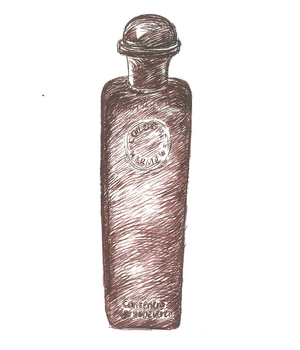 In 1979, Hermès launched a brilliant take on the classic men’s eau-de-cologne. Simply called Eau de Cologne d’Hermès, it was created by Françoise Caron, who you could almost say had perfume in her blood. Born in the one-time capital of French fragrance, the Provençal town of Grasse, into a family that worked in the perfume trade, both she and her brother, Olivier Cresp, became highly regarded professional perfumers in their own right.
In 1979, Hermès launched a brilliant take on the classic men’s eau-de-cologne. Simply called Eau de Cologne d’Hermès, it was created by Françoise Caron, who you could almost say had perfume in her blood. Born in the one-time capital of French fragrance, the Provençal town of Grasse, into a family that worked in the perfume trade, both she and her brother, Olivier Cresp, became highly regarded professional perfumers in their own right.
Many perfumes are variations on a theme, and the fresh, citrusy scent of eau-de-cologne is probably the best-known theme of all. But some variations are more interesting and successful than others, and Françoise Caron’s master-stroke was to turn up the volume, if you like, on a single ingredient – bitter orange – that plays a subsidiary role in most colognes.
The effect is delicious and bracingly sour-sweet, like a proper old-fashioned lemonade, but because orange is a more powerful, complex citrus scent than lemon it has far more depth and staying power. Françoise Caron also included mint (which adds a minor cooling touch), as well as lime and blackcurrant buds – which, if like me you have blackcurrant bushes in your garden, you’ll know have an intriguing scent, both sweet and slightly foxy.
Eau de Cologne d’Hermès continued in production until 1997, when Hermès changed its name to the slightly more individual Eau d’Orange Verte, though the scent remained the same. One criticism of Caron’s original perfume was that it didn’t last very long, and presumably as a response to this, in 2004 a concentrated version was released, tweaked by in-house perfumer Jean-Claude Ellena and helpfully called Concentré d’Orange Verte.
It’s this version I like best, I suppose because it seems to have retained all the character of Françoise Caron’s original yet packs a rather more powerful punch, and on my skin at least it certainly seems to last a good hour or two. It’s a zesty, uplifting and – I’d say – a happy scent, and one that I’d happily wear every day. Perfect for lifting the spirits on a dull grey Monday morning.